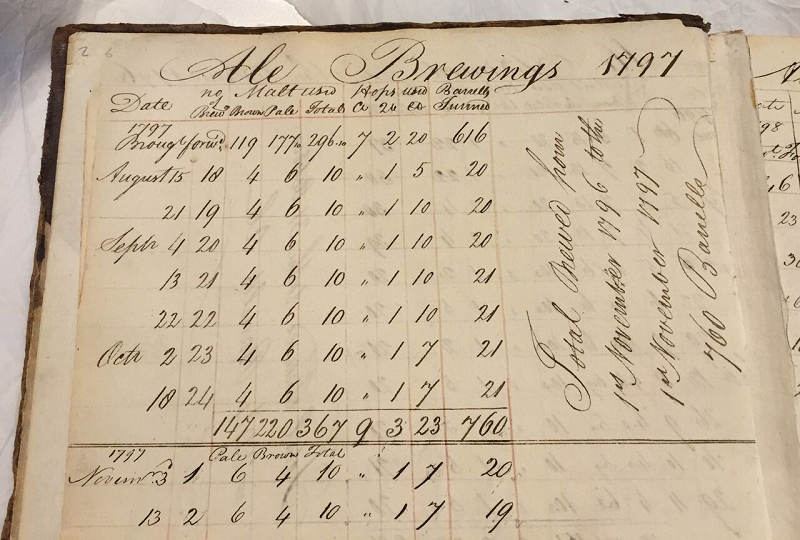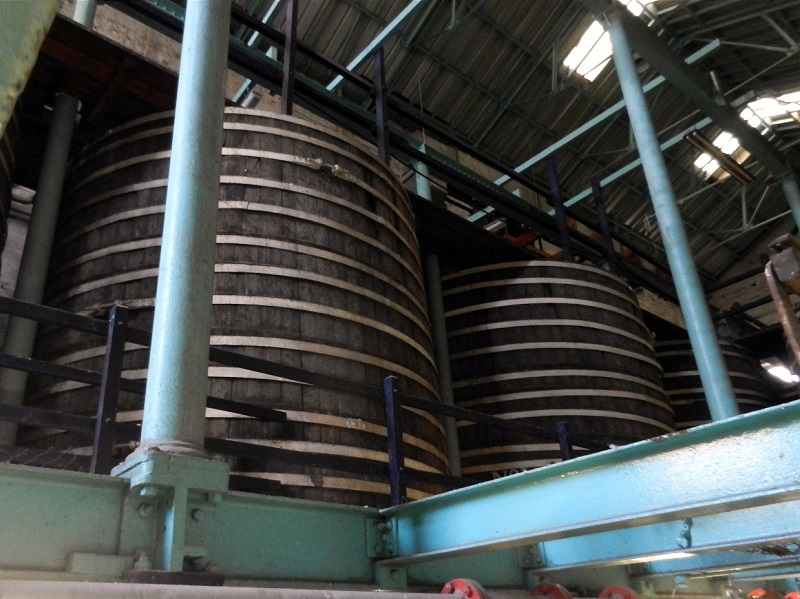All Styles Evolve: The Guinness Example
[Full Disclosure. The following post came as a result of a visit I made to Dublin to the Guinness brewery. The folks at Diageo, Guinness’ parent company, paid for the trip and put me up while I was in Dublin. Guinness is also a sponsor of my personal blog, Beervana.]
In the 1970s and ‘80s, Americans started to discover the wider world of beer beyond mass market lagers. As the brewing renaissance took hold, they read their Michael Jackson and tried to learn everything they could about Bavarian weissbier and Belgian tripels and French bière de garde. And, as they began repopulating their taxonomical lists, they made a mistake, thinking that the styles they found then were somehow unchanged and unchanging. But all styles change. Even in Germany, where there is a sense that the beer styles have all achieved a kind of Platonic ideal, they’re still on the move. (German brewers who immigrated to the U.S. go back and are surprised how, a decade or two later, the color and flavors of beers have weakened.)

(Photo by Jeff Alworth)
This spring, I had the opportunity to see this first-hand as I sat down in front of 219-year-old brewing logs at the Guinness Brewery in St. James Gate, Dublin. The archivist, Eibhlin Colgan, had anticipated my interests and pulled out the oldest logs they had. They began in 1797 with production lists for “ale brewings”—descriptions of the batches of ale they were making at the time. (Ale, a lighter-colored beer, as distinct from porter, which the brewery was quickly turning to.) The oldest recipe in the archives dates to 1801, and is illustrative of the distance “Irish stout” has traveled in two centuries. The lineage of that 4.2% nitrogenated draft pour we get down at the pub is connected in a direct line to that first recipe—though the beers could hardly be more different.
Porter was a London invention. It had been around for nearly a century by the time of that 1801 recipe. London breweries made this porter from a particular kind of brown malt (called, variously, brown, blown, snap, or porter malt) that was the lowest, roughest grade. It was kilned slowly to dry, then heated up rapidly so that the sudden heat caused the kernels to explode like popcorn. It was burnt and acrid tasting—a “smoaky tang” in the words of an observer—not a refined flavor. The brewers of the time did not sparge, or sprinkle water over the mash bed to rinse the grain of sugar, and instead pulled successive runs off the same mash. Often these would be blended to make different strengths of beer, but porter brewers blended all of them together into one “entire” beer.

(Photo by Jeff Alworth)
The thing that made porters so famous—the reason breweries in Dublin and Philadelphia and Sydney made them—was what happened next. That rough, smoaky beer went into wooden vats and sat there for months and was transformed into a sophisticated, tart, sherry-like beer that soon became renowned across the globe. We now know the reason was because of microorganisms in the wood that gobbled up those harsh flavors and replaced them with esters and acids. That slow fermentation scrubbed the beer of its smoke and refined it along the way.
Porter issued from the center of the British empire, and sailed in the belly of ships that circled the globe. It wasn’t too many decades before breweries elsewhere were trying their hands at it, and those in Dublin were among the first. When Guinness started brewing porter, the brewers emulated the recipe and process in London, making worts of brown malt and aging the beer in wooden vats. The company’s records don’t go back to 1760, the first year of operation (that famous lease for the St. James Gate brewery was signed on the last day of 1759), so we don’t know when porter-brewing started. But we know that by the early years of the 19th century, London-style porter was the main style brewed there.

(Photo by Jeff Alworth)
Things carried on in that fashion for the next couple decades, but an event in 1817 sent things in a different direction. A man named Daniel Wheeler invented a machine that could produce very dark, bitter roasts. He patented the roaster, and the resulting malt was called “patent” malt or “black patent” (a malt homebrewers will recognize to this day). London brewers adopted the new malt and started including it in their grists, but they continued to use brown malt, which gave porters their characteristic flavor. But Dublin brewers soon ditched the brown malt altogether. By the mid- to late-1820s, Guinness was using only pale and patent malt to make their porters. This was the first deviation from the London branch of porters, and the beginning of the Irish stout tradition.
The next big change happened a bit over a half century later. Throughout the 19th century, Ireland was a part of Great Britain and subject to British laws—one of which dictated that only malt could be used in the grists of beer. That changed with the passage of the Free Mash Tun Act of 1880, which allowed breweries to use other ingredients. In English brewing, this was when sugar came into the picture, but in Ireland, the law allowed breweries to use roasted but unmalted barley. It’s not clear exactly when Guinness took up the practice, but it wasn’t long before it became (and remains) a key component of the style.
It was also during this period that the name of the beer style changed. The word “stout” comes from the adjective used to describe the strongest versions of these beers. Archivist Eibhlin Colgan says the first use of the word was in 1810. “There is a reference in one of the brewing memorandum books to brewing a Superior Porter in 1810 which is noted ‘to try whether the publicans will encourage a stouter kind of Porter during the operation of the present Bounty on Beer.’” The actual name change probably took place in 1840, when Extra Superior Porter was referred to as Double Stout in brewing logs. Colgan concludes, “By 1862, when the Guinness trademark label was first introduced, Double Stout had again been renamed, this time to Extra Stout.”
Roasted barley has become such a characteristic component that it is considered mandatory. For a forthcoming homebrew book, I worked with professional brewers to understand the keys to their beers. Peter Mosley, the master brewer at Dublin’s 20-year-old Porterhouse Brewery, described the quintessential Irish stout this way. “However, a true Irish stout should have a strong dark color, black at first glance, though a deep ruby would be more correct on closer examination. Stouts should also have a rich, full bodied mouthfeel, traditionally from the roast barley.” Guinness now roasts its barley onsite, and that’s what gives the beer its 21st-century flavor; they no longer use black malt at all.
Guinness has always made multiple products. Through much of the 19th century, the central product was a strong, bottled stout we now know as Foreign Extra Stout. Like the old London porters that inspired it, FES went through a long maturation process and was put into bottles without priming; the wild yeasts were still active enough to carbonate these bottles on their own. In A Bottle of Guinness, Please, former Guinness brewer David Hughes reports that it was spending an astonishing 22 months in the vat in 1919.
Another important product was the draft version of Guinness, which, as I described a couple months ago, involved a convoluted process of blending aged, still stock with young, carbonated beer. In the 1950s, Michael Ash led a team that modernized the dispense system of draft Guinness by the use of nitrogen. This now-weak Guinness stopped being a partly vat-aged beer with vinous acidity and turned into the product we know today.
Foreign Extra Stout also went through a more mysterious transformation, one I’ve never been able to nail down. It is no longer vat-aged and—well, beyond that information is scarce. In the 1940s, Guinness started experimenting with extracts and concentrates that could impersonate the flavor of vat aging. A number of different products were produced over the decades, and vat-aging was abandoned. (If you ever have a chance to visit the brewery, you’ll arrive at the Storehouse after traveling down lanes lined with old vat houses, now unused.) The acidity that once defined Guinness has mostly been bred out of the beer.
So, to recap, these are the phases Guinness (and Irish stout in general) have gone through. It started as a strong, acidic, vat-aged brown beer made with smoky malt, morphed into a darker, more bitter strong, vat-aged beer, then achieved additional mouthfeel and character through the use of roasted barley, and finally, turned into a session stout, not vat-aged, not strong, darkened entirely by roast barley, and served on nitrogen.
Not every beer style goes through a transition as dramatic as this one, but they all change over time. There is no such thing as a static style. Even the “Irish stout” we know today is probably not the end point. Who knows, perhaps a clever brewer at Guinness will start an initiative to put beer back into those huge vats again, bringing some of the wildness back to the beer. Or maybe they’ll just start using Mosaic hops, like everyone else. Whatever the future holds, don’t bet on it staying the same.
Jeff Alworth is the author of the book, The Beer Bible (Workman, 2015). Follow him on Twitter or find him at his blog, Beervana.

Interesting indeed! I’m heading to Dublin for work next month and wish I could check out the archives myself (ex-archivist here), though I doubt I’ll have time, so this was a helpful peek inside. Love your point that Guinness has never been just the one thing; it’s easy to forget that change is constant.
If you can swing it, you should absolutely swing by the archive and see Eibhlin (pronounced “Evelyn”). Email me and I’ll put you in touch. They not only have brewing logs, but an amazing collection of the Gilroy prints and drafts from his decades of work with them.
Excellent information.
Excellent article, Jeff! Really appreciated the history behind the Irish stout. I’ve seen a lot of misinformation on stouts & porters, and this really cleared it up.
I know pretty much all styles of beer will eventually change and evolve in some way; do you think there will be entirely new categories of beer in the future? Or merely new subcategories of established styles?
The central product was standard Extra Stout, which included an aged element amongst other things. But it way outsold FES. I’ve the numbers somewhere.
For me the most sudden an inexplicable change is the huge increase in the rate of attenuation in the early 1950’s.